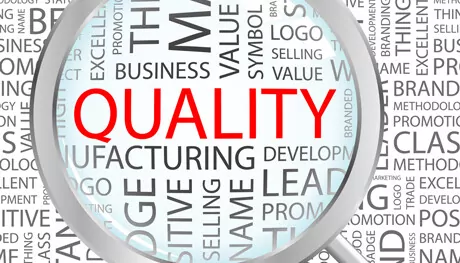With a lot more work and a lot fewer notified bodies available under the In Vitro Diagnostic Regulation (IVDR), manufacturers need to pay close attention to the technical files. Making these files clear, concise and with easy navigation will assist busy reviewers with their role.
Designing the technical file starts with the quality management system (QMS). Ideally, the design and development processes of the QMS should be aligned with the creation of the design history file (DHF), which in turn should contain all the requirements for the technical file. This file and documentation is what is submitted to the notified bodies, who review it, and all being well, provide certification.
This is new for most in vitro diagnostic products, since previously just a small number were required to submit technical files. In the past, companies may have voluntarily followed the Global Harmonization Task Force (GHTF), now the International Medical Device Regulators Forum (IMDRF), with the Summary Technical Documentation (STED) format. Now, under the IVDR, companies must develop and submit technical documentation according to the detailed requirements contained within the regulation.
Preparing the technical documentation
The regulation states that the technical documentation must be clear, organized and readily searchable, and must include specific elements listed in Annex II and III of the IVDR. These include:
Device description and specification, including variants and accessories
Under the device description is the product’s intended purpose, which previously was often called the intended use. This is a critical part of the device description as it determines classification and is a prominent part of the labeling and instructions for use and has an impact on the performance evaluation required for the finished device. Intended Purpose may vary depending on market, variations, registrations and claims.
Information supplied by the manufacturer
Central areas of focus here are labeling and IFUs, since these components of the finished device can present compliance issues for companies. As such, there is a need for multiple internal stakeholder involvement to ensure correctness and compliance are maintained.
Design and manufacturing information
While, in theory, manufacturing information should be easy to collate, in reality manufacturing processes for some diagnostic products can be very complex. Ideally the information should come from well-documented standard operating procedures showing process flow charts from incoming materials to in process controls and finished device testing.
With many companies outsourcing at least some part of the manufacturing process, site identification, supplier approval processes and qualification of subcontractors are all of relevance. This is something reviewers will pay close attention to, so companies must demonstrate they have proper oversight and control of delegated activities.
General Safety and Performance Requirements
The amount of data involved can be significant, so it’s advisable to use a GSPR template or checklist based on requirements, and reference harmonized standards where relevant along with internal documentation, test reports, and studies that support the requirement. .
Benefit-Risk Analysis and Risk Management
Risk is a primary focus of the IVDR. ISO 14971:2019 — Application of risk management to medical devices, which applies also to IVDs, should be built into the QMS to mitigate risk and to ensure risk has been reduced as far as possible
Product Verification and Validation
The purpose of IVDR is to prove that the product works, and, to this end, companies must perform a series of tests as part of verification and validation to support the performance characteristics. – These include both analytical and clinical testing – the analytical and clinical performance test plans and reports are key documents for this part of the technical file.
Conducting studies on patient samples in the clinical environment to demonstrate that the suer environment has no adverse impact on the safety and performance of the device is a most effective way to demonstrate clinical performance.
Clinical performance must be demonstrated based on clinical performance studies, peer reviewed literature or published experience gained by routine diagnostic testing.
Software can be a critical component of an IVD and this can be anything from an algorithm that dictates diagnostic results, or it could be that the software is the diagnostics device, for example, an app. In all cases verification and validation for this part of the product is a critical element of the submission for review and approval by notified body.
Summary of Safety and Performance
The SSP is a new requirement of IVDR and is intended to provide public access to an up-to-date summary of the main aspects of the safety and performance of the device – it contains a number of key specifics including the device description, its intended use and purpose, risks, warnings and a summary of performance evaluation information including post market performance follow up (PMPF).
Post-market surveillance
This is now a lifecycle process and requires the QMS to be updated to meet these requirements.
With software increasingly a critical and integral part of many IVD products, IVDR requires that technical documentation contain evidence of the validation of the software as used in the finished product. The requirements around software validation are comprehensive and cover design and development, validation of tests performed both in-house and in simulated or real-world environments, details on the technical specifications needed to run the software – such as hardware, operating systems, connectivity and security – and installation requirements.
About the author:
Sean O’Dowd is Director Medical Devices and IVD at PharmaLex








